Existing User Log In
New User Registration
Register for a free account to gain full access to the VGChartz Network and join our thriving community.



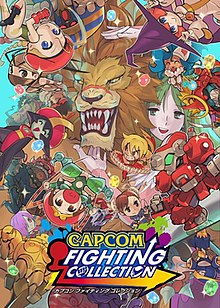

America - Front
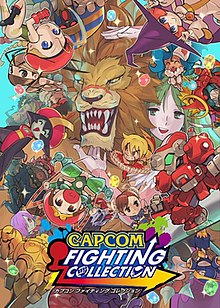

America - Back

Sometimes a publisher will tease a new video game anthology and you think "how are they going to fill out the roster?" Then there's Capcom Fighting Collection, where you think "how are they going to cut down the roster?" After all, Capcom has been one of the market leaders in the 1v1 fighting game space for three decades, thanks to big properties like Street Fighter — closing in on 50 million units sold — plus smaller niche titles like Cyberbots, and everything in between. In fact, there are enough titles in the Capcom catalog to fill this collection twice over, if not more.
For the purposes of this compendium, though, we're limited to ten fighting games, some more famous than others. That includes the full Darkstalkers series, covering the original trilogy and two variants never before released outside of Japan; the mech fighter Cyberbots; the sixth arcade iteration of Street Fighter II, Hyper Street Fighter II: The Anniversary Edition; the color-matching game Super Puzzle Fighter II Turbo; the chibi fighter Super Gem Fighter Mini Mix; and, finally, the rarest game in the collection, Red Earth, never before released on PC or console.
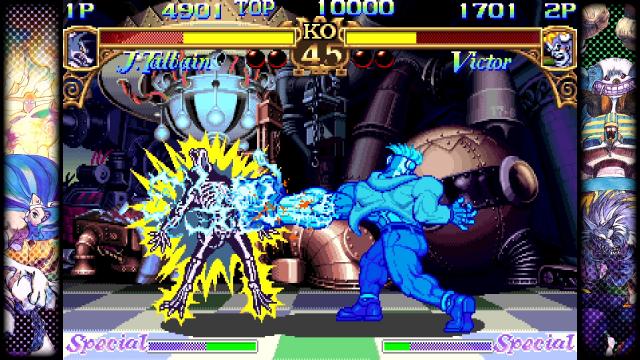
These ten games, released originally between 1994 and 2004, are almost all worth playing. There really isn't a dud in the bunch, although some titles absolutely have more staying power than others. The big star is the horror-themed, anime-styled Darkstalkers franchise, which takes up 50 percent of the collection. Is that too much? Well, it's complicated. The good news is that that the first three games in the series are all superior 1v1 fighters and deserve a place to shine. Indeed, the third game, Vampire Savior: The Lord of Vampire (also known as Darkstalkers 3), is one of the most rewarding fighting games you'll ever play, and arguably the best individual title in in the Capcom Fighting Collection. The bad news is that that the final two Darkstalkers games, Vampire Hunter 2 and Vampire Savior 2, feel very much superfluous. They're essentially "what if" versions of Vampire Savior, with palette swaps, gameplay tweaks, and slightly different rosters.
One of the more unique experiences in the collection is Cyberbots: Full Metal Madness, a fighter that replaces the humanoids typical of the genre with mechs. It's a very different, very interesting game that looks and sounds great, but which isn't as inviting as other titles in the anthology; it plays slightly slower and clunkier than average. That said, it's good to have it here, especially for its mechanical and thematic diversity.
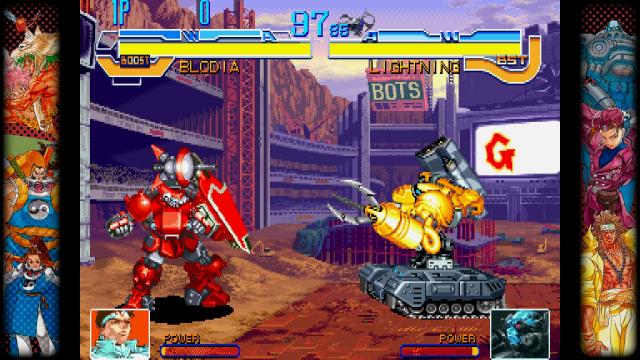
The youngest title in Capcom Fighting Collection is 2004's Hyper Street Fighter II: The Anniversary Edition, which includes character versions from each of Street Fighter II's five iterations, from the original Street Fighter II to Super Street Fighter II Turbo. That's 17 unique characters (including Akuma) with 65 different character variations. It therefore represents a convenient way to recreate the earlier Street Fighter II installments, all of which are already spoken for on Street Fighter: 30th Anniversary Collection.
The oddball of the group has to be Super Puzzle Fighter II Turbo, which isn't a fighting game at all, but rather a color-matching puzzler like Puyo Puyo. Despite not acting at all like a traditional fighter, it's a solid title with high replay value and approachable gameplay. Similarly approachable is Super Gem Fighter Mini Mix, which features a simplified combat system and chibi characters, making for a distinctive experience with a low barrier to entry.
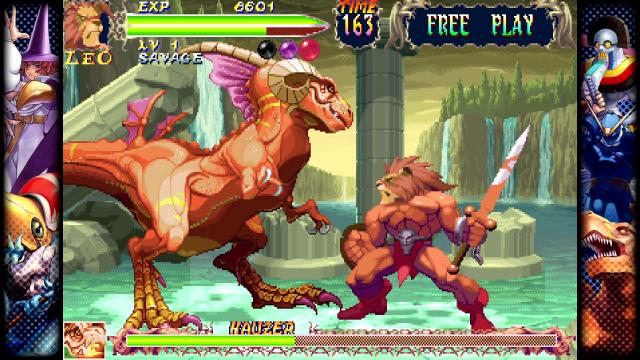
That brings us to Red Earth — not the best game on offer, but arguably the most desirable. Released in 1996 and powered by Capcom's CPS3 board (later used to great effect in Street Fighter III), it's one of the most visually-striking arcade titles of the era. It still looks glorious today, with huge, amazingly-detailed models and scaling in the style of Samurai Shodown. What makes the game so different, though, is its single-player Quest Mode, which feels like a mix between a traditional Capcom fighter and a side-scrolling beat-'em-up. It features light RPG mechanics, treasure chests, boss battles, and password saves. The only downside: a mere four playable characters, which limits its appeal as a multiplayer experience.
While the games themselves are the most essential part of any anthology, the features and bonuses that surround them are also important. On this front, Capcom delivers the goods. The collection's developers have faithfully reproduced the arcade look and feel of each game, removed any bugs, and produced a smooth experience with no noticeable input delays or frame rate drops. They've also added enhancements and quality-of-life elements to make everything more customizable and flexible than before.
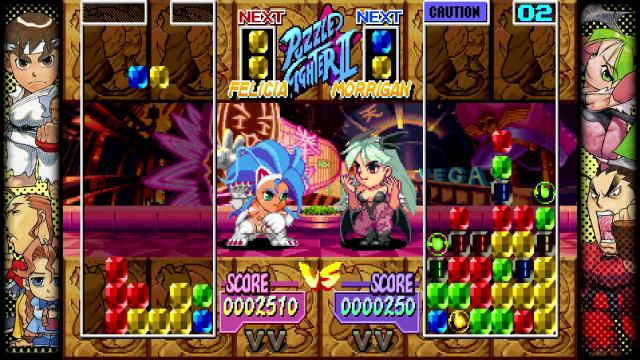
That includes a super helpful training mode for every title apart from Super Puzzle Fighter II Turbo, which has its own in-game tutorial. Training allows you to try out each character and stage in a controlled environment, and provides a host of dummy options. It even lets you simulate network delay! While it doesn't walk you through some of the more complex moves, tactics, or rules, it does provide an exhaustive list of character-specific moves and basic moves. Plus it shows damage and combo indicators, and button inputs with the number of associated frames.
In addition, Capcom Fighting Collection supports customizable difficulty settings, multiple display options, quick saves, and mappable controls — including one-button special moves.
In terms of bonus options, the collection supports an impressive digital museum with a gallery of more than 500 pieces of concept art, promotional pamphlets, instruction cards, character animations, and other unreleased materials, plus over 400 music tracks including all-new remixes — some of them offered exclusively as a pre-order bonus. It also boasts in-game achievements called "Fighter Awards". Finally, it includes English and Japanese versions of each game (minus the Japanese-exclusive variants of Vampire Savior), although it's difficult to spot any meaningful differences outside of title and character name variations. The one exception appears to be Red Earth. In the localized version, the game takes place in the 14th century; in the original Japanese version, it's 1999.
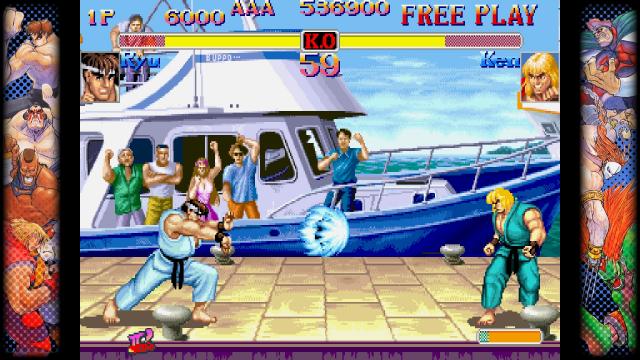
While the collection accounts for regional differences, it doesn't allow for console versions of its games. Now, to be fair, console versions are outside the scope of this arcade collection, but it would have been great to have seen console ports of some of these titles, many of which have extra options, modes, and characters, even if they're technologically inferior.
Like any fighting game collection worth its salt, Capcom Fighting Collection provides the infrastructure for online multiplayer and leaderboards, in addition to two-player local support. Online play allows up to nine players across all 10 titles in ranked, casual, or custom lobbies. One amazing, unexpected feature is the ability to go where you please as you wait for matchmaking in the background. You can remain in the lobby, go and play another game, or even browse the museum. [Note: due to limited players on Switch ahead of launch, I was unable to test the rollback netcode Capcom uses for online multiplayer.]
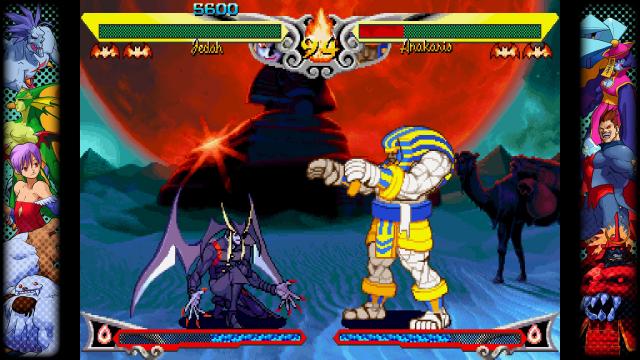
While Capcom provided plenty of modern conveniences and bonuses in Capcom Fighting Collection, it missed out on one small but meaningful item: synopses for each title in the game select screen, noting their historical significance and primary fighting mechanics. This kind of additional context is always welcome, particularly for first-time players.
Even without the history lesson, it's clear the games included in Capcom Fighting Collection are culturally-significant, fun to play, or, in some cases, both. Capcom had a long list of fighters from which to pull, and landed on a healthy, diverse lineup — a couple of redundant Darkstalkers games notwithstanding. With ten games, online lobbies, multiple achievements, and many opportunities to master your fighting technique, there should be plenty here to keep you busy while you wait for some enterprising Capcom executive to green light Red Earth 2.